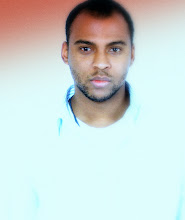Reuter site - Nobel for quantum "parlor trick" that could make super computers
This article was sent to you from bombastic4000@yahoo.com, who uses Reuters Mobile Site to get news and information on the go. To access Reuters on your mobile phone, go to:
http://mobile.reuters.com/article/topNews/idUSBRE8980DZ20121009
Nobel for quantum "parlor trick" that could make super computers
Tue, Oct 09 08:18 AM EDT
By Niklas Pollard and Anna Ringstrom
STOCKHOLM (Reuters) - A French and an American scientist won the Nobel Prize on Tuesday for finding ways to measure quantum particles without destroying them, which could make it possible to build a new kind of computer far more powerful than any seen before.
Serge Haroche of France and American David Wineland, both 68, found ways to manipulate the very smallest particles of matter and light to observe strange behavior that previously could only be imagined in equations and thought experiments.
Wineland has described his own work as a "parlor trick" that performed the seemingly magical feat of putting an object in two places at once. Other scientists praised the achievements as bringing to life the wildest dreams of science fiction.
"The Nobel laureates have opened the door to a new era of experimentation with quantum physics by demonstrating the direct observation of individual quantum particles without destroying them," said the Royal Swedish Academy of Sciences, which awarded them the 8 million crown ($1.2 million) Nobel Prize in Physics.
"Perhaps the quantum computer will change our everyday lives in this century in the same radical way as the classical computer did in the last century."
Haroche said he was walking in the street with his wife when he recognized the Swedish country code on the incoming call to inform him of the award.
"I saw the area code 46, then I sat down," he told reporters in Sweden by telephone. "First I called my children, then I called my closest colleagues, without whom I would never have won this prize," he said. Asked how he would celebrate, he said: "I will have champagne, of course."
He told Reuters he hoped the prize would give him a platform "that will allow me to communicate ideas, not just in this field of research but for research in general, fundamental research".
Physics is the second of this year's crop of awards; scientists from Britain and Japan shared the first prize on Monday, in medicine, for adult stem cell research. The prizes, which reward achievements in science, literature and peace, were first awarded in 1901 in accordance with the will of Swedish dynamite millionaire Alfred Nobel.
WEIRDER ASPECTS
"This year's Nobel Prize recognizes some of the most incredible experimental tests of the weirder aspects of quantum mechanics," said Jim Al-Khalili, professor of physics at the University of Surrey in Britain.
"Until the last decade or two, some of these results were nothing more than ideas in science fiction or, at best, the wilder imaginations of quantum physicists. Wineland and Haroche and their teams have shown just how strange the quantum world really is and opened up the potential for new technologies undreamt of not so long ago."
Quantum physics studies the behavior of the fundamental building blocks of the universe at a scale smaller than atoms, when tiny particles act in strange ways that can only be described with advanced mathematics.
Researchers have long dreamt of building "quantum computers" that would operate using that mathematics - able to conduct far more complicated calculations and hold vastly more data than classical computers. But they could only be built if the behavior of individual particles could be observed.
"Single particles are not easily isolated from their surrounding environment, and they lose their mysterious quantum properties as soon as they interact with the outside world," the Nobel committee explained.
"Through their ingenious laboratory methods Haroche and Wineland, together with their research groups, have managed to measure and control very fragile quantum states, which were previously thought inaccessible for direct observation. The new methods allow them to examine, control and count the particles."
Both scientists work in the field of quantum optics, studying the fundamental interactions between light and matter. The Nobel committee said they used opposite approaches to the same problem: Wineland uses light particles - or photons - to measure and control particles of matter - electrons - while Haroche uses electrons to control and measure photons.
In one of the strange properties of quantum mechanics, tiny particles act as if they are simultaneously in two locations, based on the likelihood that they would be found at either, known as a "superposition".
It was long thought that it would be impossible to demonstrate this in a lab. But Wineland's "parlor trick" was to hit an atom with laser light, which according to quantum theory would have a 50 percent chance of moving it, and observe the atom at two different locations, 80 billionths of a meter apart.
In a normal computer, a switch must either be on or off. A quantum computer would work with switches that, like the particles in Wineland's experiment, behaved as if they were in more than one position at the same time.
An example is a computer trying to work out the shortest route around town for a travelling salesman. A traditional computer might try every possible route and then choose the shortest. A quantum computer could do the calculation in one step, as if the salesman travelled each route simultaneously.
($1 = 6.6125 Swedish crowns)
(Additional reporting by Sharon Begley, Patrick Lannin, Alistair Scrutton, Chris Wickham, Ben Hirschler and Nicholas Vinocur; Writing by Peter Graff; Editing by Will Waterman)

